The Complete Guide To Knee Tucks: Building Core Strength

Every day is an important day when it comes to working out.. Arm day, leg day, chest day, back day -- they all work in harmony to help get you shredded and toned. But having a buff upper body and some chiseled calves doesn’t mean much when your core is looking a little flat.
Your core, or abdomen, can make or break your physique, and doing the right exercises can turn those six-pack flabs into six-pack abs. The thing is, many people tend to do abdominal exercises that only challenge one specific muscle.
Let’s change things up a little bit with knee tuck exercises that will have your core begging for more.
The Core Properties of Your Core
When you do a core exercise, such as a plank, you’re actually working about four different muscles. The main one that you’re probably concerned with is the rectus abdominis, which is in the midsection of your belly. It’s where you’ll expect to see some six-pack abs after doing all these knee tucks.
However, your transverse abdominis is the deepest muscle of your core, located on each side of your navel. You can’t see it, but it’s the muscle that basically allows your core to fully support your spine and coordinate movements throughout the rest of your body.
There are also internal and external obliques on the left and right sides of the rectus abdominis. The external obliques are on the side and front of the abdomen, whereas the internal obliques are underneath them, running in the opposite direction.
Finally, your core isn’t just composed of muscles on the anterior or front portion of your body. There are the multifidus and erector spinae muscles which run along your spine from your head to your pelvis.
When you do a knee tuck, you’re activating most of these muscles to some degree. However, it primarily focuses on the lower part of the rectus abdominis, also called the “lower ab.” But you’re also activating the transverse abdominis, as well as leg muscles like your hamstrings and quads. Not to mention, you can work those obliques by doing a variation of the exercise.
We’ve teased you enough. Let’s get into the basics of how to do a knee tuck and how you can modify it for extra challenge or relief.
How to Do a Seated Knee Tuck
A seated knee tuck is an easy exercise to perform but a difficult one to master. It doesn’t require any advanced motion, but it will cause your abs to beg for mercy.
Here’s how it’s done:
- Sit on the floor with your legs extended out in front of you. Place your hands behind you for support and lean back. Try to be at a 45-degree angle with the floor. Lift your legs off the ground.
- Bring your knees, bringing your legs towards your chest. Contract your abs during this motion. Try to bring your knees as close to your face without ever moving your upper body.
- Squeeze those abs tight for a moment and then slowly return to the starting position.
And that’s all there is to it. Start out with the basic movement here, master it, and then you can try moving onto more advanced variations.
An Easier Modification
The knee tuck can be a tough move, especially after hitting a ton of reps. However, you can modify it to make it a bit less challenging by doing flutter kicks instead. They work like this:
- Lay down on the ground flat, facing the sky. Place your arms at your sides for stability.
- Raise your legs about six inches off the ground. Bring one foot down until it hovers just slightly above the floor. Then, raise this foot and lower the other.
- Keep alternating this movement, keeping your abs engaged throughout.
This will still work the lower abdomen, but it reduces the range of motion. Of course, you can always try to do as many traditional knee tucks as possible and then switch over to these when you need a bit of a rest.
Knee Tuck Variations
The great thing about knee tucks is that there are seemingly never-ending ways that you can spruce things up. It’s a versatile exercise that can be altered to work different muscles or build up even more of a sweat. Let’s dive in and look at a few.
Weighted Knee Tucks
If you’ve mastered the bodyweight knee tucks, then the first course of action might be to throw on some weight. You can balance a medicine ball on your ankles to help strengthen those core muscles even more. Be careful to use slow, steady movements, so you don’t lose control of the weight.
Seated Knee Tucks to Leg Crunches
Knee tucks give you the freedom to combine the move with some other types of exercises. A great one is the leg crunch, as this will help engage some of your upper abdominal muscles as well.
After you complete a knee tuck, keep your legs straight out in front of you. Then, without bending your knees, raise them up and push your abdomen slightly forward, squeezing your abs when your legs reach their peak. Keep alternating between the two.
Bicycle Curl
Bicycle curls use a similar motion to knee tucks, but these implement a twist that will allow you to target your obliques. Lay on the ground and raise both legs slightly off the ground. Place your hands behind your head.
Bring your left knee toward your body just like a knee tuck. Next, lift your upper body and touch your left knee with your right elbow, twisting your abdomen. Return your upper body and your leg to starting position and then switch sides.
Benefits of Knee Tucks
Knee tucks, and core exercises in general, have the main benefit of being able to strengthen the muscles in your core. Not only can this have aesthetic benefits like a ripped six-pack, but it can also have benefits for your health.
For one, a strong core can improve your posture by helping to keep your spine aligned instead of slouching. Additionally, it can enhance your performance in sports or other high-intensity activities.
Your core is involved in everything you do -- that’s why it’s called your core. Doing exercises like knee tucks and utilizing some of its variations is essential for keeping your body safe and attractive.
Core Workouts with the Gorilla Bow
Resistance training and core exercises usually don’t mix, but that’s because the Gorilla Bow wasn’t around. You can use the Gorilla Bow to enhance your core fully and add a little extra challenge.
A great exercise that will work your rectus abdominis similarly to the knee tuck is the pike crunch. To do this with the Gorilla Bow:
- Sit on the floor, feet flat in front of your and knees bent. Place the resistance band under your lower back. Hold onto the bar out in front of you with a slight bend in your elbows.
- Engaging your abdomen, lift your upper body up and push the Gorilla Bow up towards the sky. It should look a lot like a regular crunch.
- Slowly lower your body back to the floor.
You can amp up your pike crunch by keeping your legs raised the whole time. This will help activate more of your upper abdomen and make the movement more challenging overall.
The Cool Down
Your core is composed of many different muscles, each of which contributes to your safety, aesthetic appearance, and athletic performance. For example, knee tucks are a great exercise that helps to activate parts of the abdomen that don’t normally get their time to shine during most core workouts.
You can do bodyweight knee tucks to feel the burn, but you can amplify that sensation by adding some weight, incorporating another movement, or turning it into a bicycle curl to work the obliques. Additionally, you can do flutter kicks as an easier modification that still works out similar muscle groups.
If you’ve got your Gorilla Bow handy, you can do a core workout such as the pike crunch to combine the tough sensation of resistance training with a similar movement to the knee tuck. You’ll have six-pack abs in no time.
For more exercises and unlimited access to both live and pre-recorded classes, the Gorilla Bow All-Access Membership is a full fitness studio right from home. Take your workouts to the next level.
Sources:
Working your core muscle groups | Marshfield Clinic Health System
Erector Spinae Group | Radiology Reference Article
Core exercises: Why you should strengthen your core muscles | The Mayo Clinic


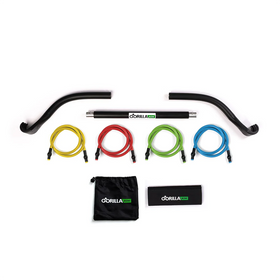
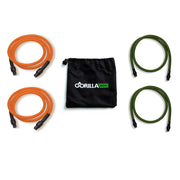
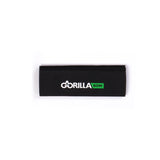
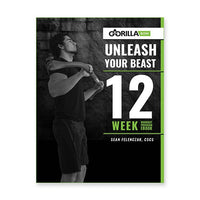
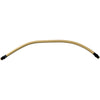



Leave a comment